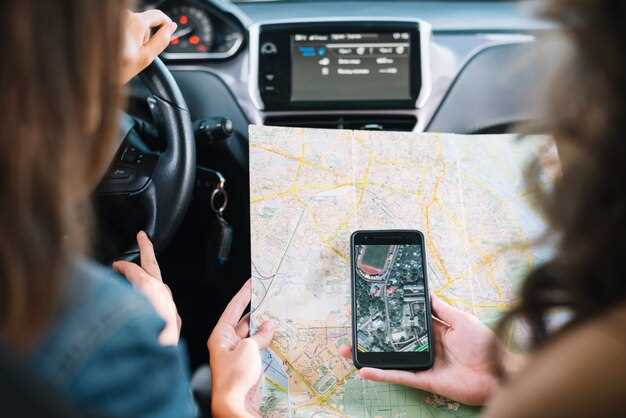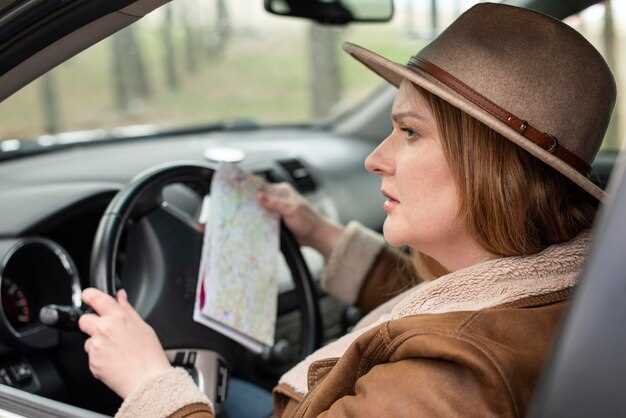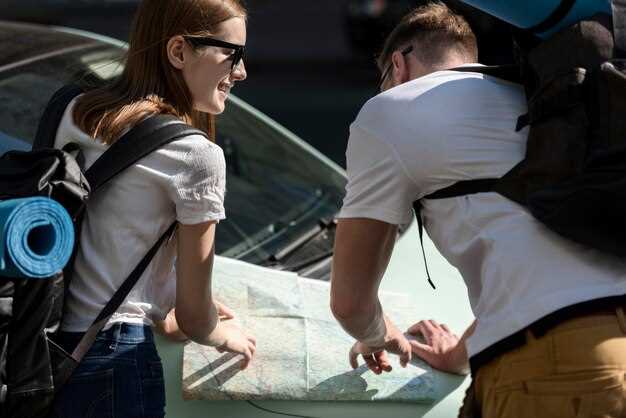
In the high-speed world of rally racing, the synergy between the driver and co-driver is crucial for success. Mastering the intricacies of navigation not only enhances the performance of the team but also ensures safety and efficiency throughout the race. The co-driver, often seen as the navigator, plays a vital role in guiding the driver through treacherous terrains and ever-changing conditions.
The responsibilities of a co-driver extend far beyond mere navigation; they include a deep understanding of the rallying rules, precise communication skills, and the ability to read the road conditions accurately. Effective navigation involves interpreting pace notes, rally maps, and adapting quickly to unexpected obstacles that may arise during the competition. A well-trained co-driver can make the difference between a podium finish and a race-ending mistake.
To truly master the art of rally navigation, co-drivers must develop a keen sense of spatial awareness and a firm grasp of keeping an accurate heading in the ever-changing rally environment. This article delves into the essential skills and techniques that aspiring co-drivers should hone to effectively support their drivers and conquer any rally challenge that comes their way.
Understanding Rally Road Books and Pace Notes
In rally racing, the co-driver plays a crucial role in navigating the complex and often challenging terrain. Central to this navigation process are rally road books and pace notes, essential tools that guide the team through each stage of the competition.
A rally road book is a comprehensive document created before the event, detailing the route, checkpoints, and any specific instructions necessary for the rally. It is typically organized in a sequential format, allowing the co-driver to follow along with the driver’s progress. Each page of the road book indicates distances, turns, and essential landmarks, serving as a navigational aid throughout the rally.
Pace notes, on the other hand, are a set of shorthand instructions developed by the crew during reconnaissance. These notes encompass detailed descriptions of the road conditions, curves, jumps, and potential hazards. Co-drivers use these descriptions to relay information to the driver in real-time, often using a coded language that allows for faster communication. The accuracy and clarity of pace notes can significantly impact a team’s performance, enabling drivers to make split-second decisions based on the anticipated road conditions.
Successful navigation relies heavily on the co-driver’s ability to interpret the road book and pace notes effectively. This requires extensive practice, as well as a deep understanding of how to adjust the information provided based on the vehicle’s speed and the unique characteristics of each rally stage. As a result, teams must refine their communication skills and ensure they are synchronized in their approach to navigating the course.
In conclusion, rally road books and pace notes are indispensable elements of rally navigation. They provide essential guidance and enhance the co-driver’s ability to support the driver effectively. Mastering the intricacies of these tools is vital for achieving success in the highly competitive world of rally racing.
Key Communication Techniques for Co-Drivers during Rallies

Effective communication between the driver and co-driver is crucial for success in rally racing. Here are some key techniques to enhance teamwork and ensure a smooth navigation process:
- Clear and Concise Instructions: Use short, precise calls for directions and upcoming obstacles. Avoid long explanations that may confuse the driver.
- Consistent Terminology: Establish specialized vocabulary for rally terms. Consistency helps both teammates understand quickly and reduces errors.
- Anticipation: The co-driver should anticipate the driver’s needs. Providing information about upcoming turns, terrain changes, and speed adjustments well in advance increases reaction time.
- Use of Road Book: Familiarize with the road book and refer to specific notes during the rally. Point out essential details at the right moments to reinforce navigation.
- Non-verbal Cues: Develop a system of signals or gestures for urgent situations. This reduces distraction and keeps communication efficient when verbal instructions may not be heard.
In addition to verbal and non-verbal communication, consider the following techniques:
- Practice Together: Regular practice sessions help establish rhythm and improve communication flow during actual rallies. Familiarity reduces stress and enhances performance.
- Feedback Loop: After each stage, review what worked and what didn’t. Constructive feedback helps refine techniques and build trust between the driver and co-driver.
- Stay Calm Under Pressure: Maintain composure, especially during high-stakes situations. A calm co-driver ensures a focused driver, ultimately leading to better decision-making.
- Adaptability: Be ready to adjust communication style based on the rally environment. Each stage may present unique challenges that require quick thinking and flexible communication.
Implementing these key communication techniques will strengthen the partnership between the driver and co-driver, enhancing overall performance during a rally.
Tools and Technologies for Enhanced Navigation in Rally Racing

Rally racing demands precision and speed, making effective navigation essential for success. Modern technologies have transformed the way co-drivers assist drivers, utilizing a range of tools designed to enhance rally navigation.
One of the primary tools in rally navigation is the Rally Navigation System (RNS). These systems provide comprehensive data on course conditions, distance, and direction. They often feature advanced mapping software and can be customized for various rally formats, enabling co-drivers to relay accurate information to drivers in real-time.
GPS devices have become indispensable in rally racing. They offer precise location tracking, allowing for efficient route planning and verification of checkpoints. Many GPS units in rally contexts are equipped with off-road capabilities and can handle multiple waypoints, which are crucial for navigating complex terrains.
Digital roadbooks have can replace traditional paper roadbooks, providing interactive features such as zooming, scrolling, and instant updates. This technology allows teams to modify routes quickly based on real-time developments during the race, ensuring that co-drivers can adapt instructions as needed.
Another innovative tool is the use of tablets and smartphones integrated with rally-specific navigation apps. These applications often combine GPS functionality with comprehensive databases, offering features like terrain analysis and environmental conditions, which can greatly enhance decision-making during a rally.
Telemetry systems allow for the transmission of data from the vehicle back to the support team. This data can include vehicle speed, engine performance, and even tire conditions. Co-drivers can use this information to optimize navigation strategies, adjusting their calls based on the car’s performance under various conditions.
Finally, effective communication devices, such as intercom systems, are vital for seamless collaboration between driver and co-driver. Ensuring that both parties can exchange information quickly and clearly can make the difference between success and failure in a high-pressure environment.
In summary, the integration of advanced tools and technologies significantly boosts navigation capabilities in rally racing. From GPS systems to digital roadbooks and telemetry, these innovations empower co-drivers to provide accurate, timely, and strategic navigation, enhancing the overall performance of rally teams.



